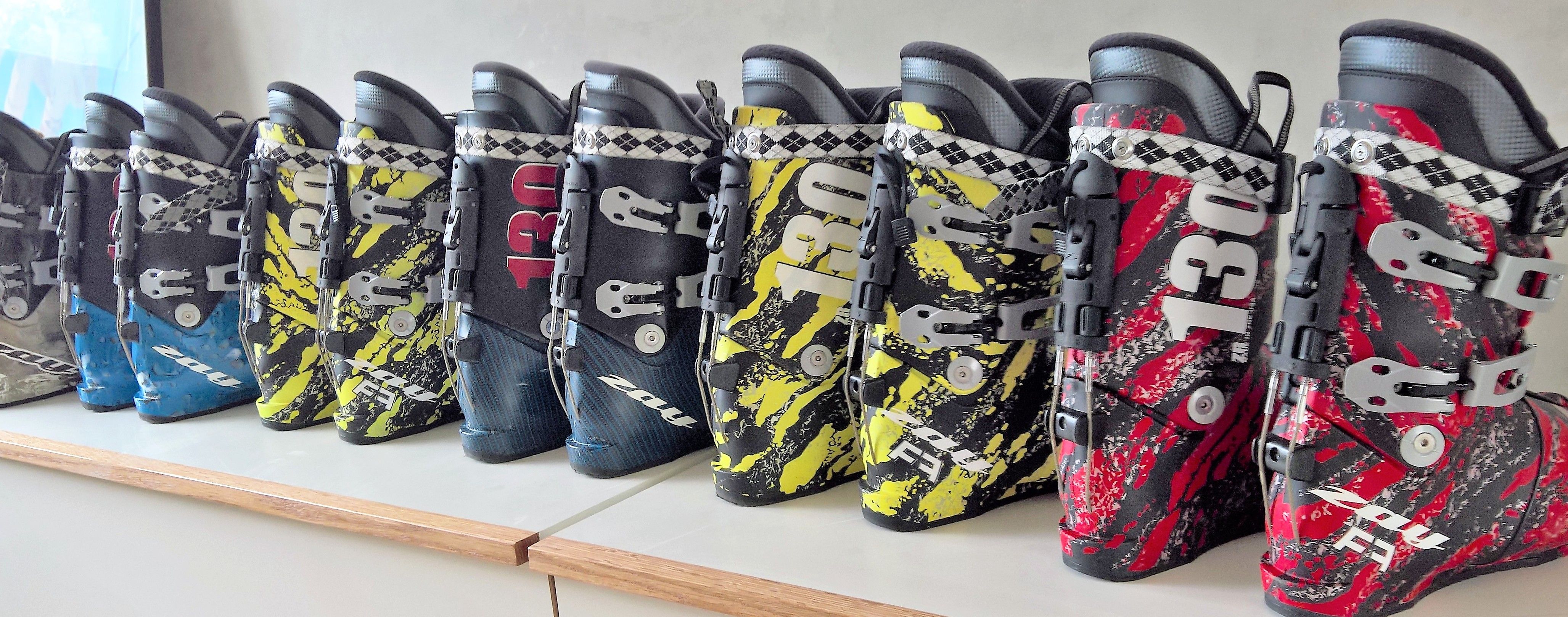
Causes of Mis-alignment Part II: Inappropriate Boot Selection
Complicating the issues further, the interaction between leg structure and boot design is highly synergistic. Sometimes the equipment is the cause. It seems like common sense, but it deserves emphasis that the design of one’s ski boots has a big affect on one’s skiing? Some boots create knock kneed symptoms in almost anyone and some boots tend to create bowlegged symptoms. If possible, boot selection should be made as an integral part of the alignment process. One’s boots should be selected to match one’s alignment needs and performance goals. Boot models are constantly changing. Therefore, it is impossible to give a simple list of models. Most boot retailers pay little attention to potential alignment issues in the process of making boot recommendations. Therefore, it is good for the individual skier to have a general understanding of some basic design features and how they tend to affect ski performance.
A general indication of how a boot will affect one’s skiing is how it makers ones knee mass “track.” For short, “tracking” can be thought of as the path one’s knee takes as the boot is flexed. That path has a starting point (inside, on, or outside of the center of the boot), and a general path (inward, straight, outward, in and then out, etc.). Ideally, the starting point should be on or slightly outside of center and the path should be straight. Different boots will give the same person different starting points and different paths. Under-the-boot canting also affects tracking. Tracking is influenced by a number of boot characteristics. These include the angle of the upper cuff rivets, the materials used in the boot, and the overall design of the mold.
Rotary versus Lateral boot designs
If the inside rivet is either lower or farther back than the outside rivet, the tracking of the boot while it flexes will tend to be inward and pressure will be transferred to the ski with rotation. These boots are considered rotary in design. For most skiers this is a boot type to be avoided. It reduces edging and makes balance more difficult. Normal human anatomy, favors inward rotation of the legs. Further, today’s shaped skis produce their own rotational forces in the direction of the turn. Moreover, the most common foot/ankle issue is excessive pronation; and many skiers have leg and knee issues that also enhance knock kneed symptoms and excessive internal rotation of the legs. For all of these reasons, boots that support strong edging and balance are lateral in design. Lateral boots often have the outside rivet either lower or farther back than the inside rivet and “support the leg in balancing and directing tracking in a straight line or even to the outside” (Harb, 1997). Within limits, the more skilled and aggressive the skier, the more lateral of a boot is needed.
Boot stiffness
Choosing an appropriate stiffness of boot is an important decision. A boot must be stiff enough to support the skier in a functional position and resist dysfunctional alignment tendencies. The softer the boot’s forward flex the less a boot will resist rotary forces. A softer boot will not necessarily produce rotary symptoms if used by a skier with a naturally well aligned anatomy and impeccable technique. However, a softer boot will be more susceptible to arrant forces if present. As a consequence, a boot that is too soft tends to produce inconsistent tracking. Ultra soft boots are out! At the minimum, a boot must be stiff enough to help resist any forces of non-functional alignment, as well as, the forces that one’s technique can generate. If you can crush the front of the boot, it will undoubtedly be with a detrimental effect, -- for most of us that tends to be toward the inside, with a twist.
Forward lean and ramp angle
Forward lean and ramp angle also affect both one’s alignment symptoms and one’s fore and aft balance. Excessive forward lean and ramp angle contribute to rotary symptoms. Generally, the more one’s knees are flexed forward while tipping the skis, the more the tipping actions are translated to rotary symptoms. Given this natural bias, lateral boots tend to be flatter and more upright. Most strongly lateral boots have lower ramp angles and are less than or equal to 15 degrees of forward lean from the boot board angle. However, a flatter the ramp angle seems to accommodate higher amounts of forward lean. Some boots have adjustable ramp angle and forward lean. In other cases, these characteristics can be modified by a good boot technician. For example, many nonadjustable boots with excessive forward lean can be straightened by trimming off a portion of the back of the boot cuff.
Instruction & Camps
Products
Contact
-
Portland / Mt. Hood Oregon